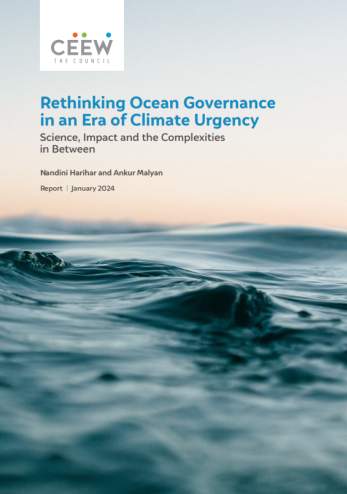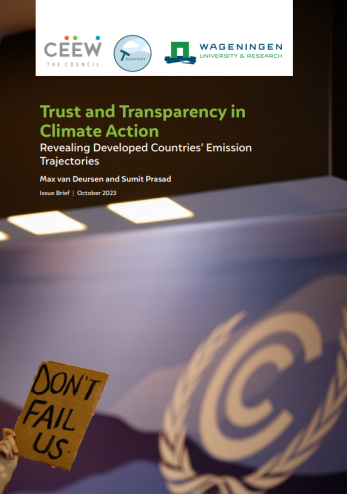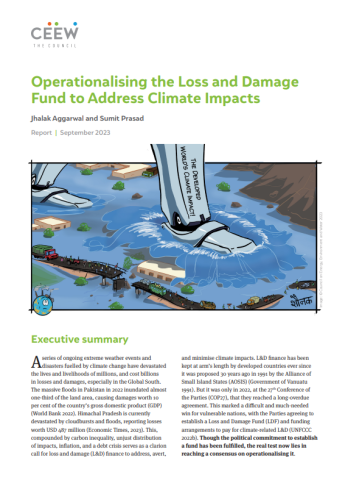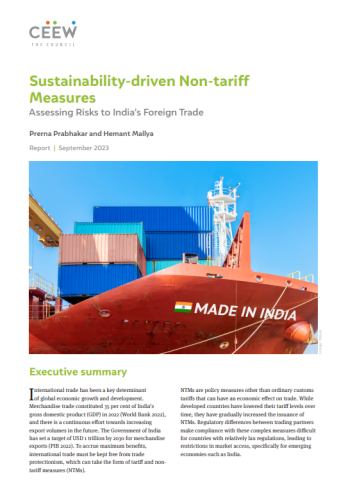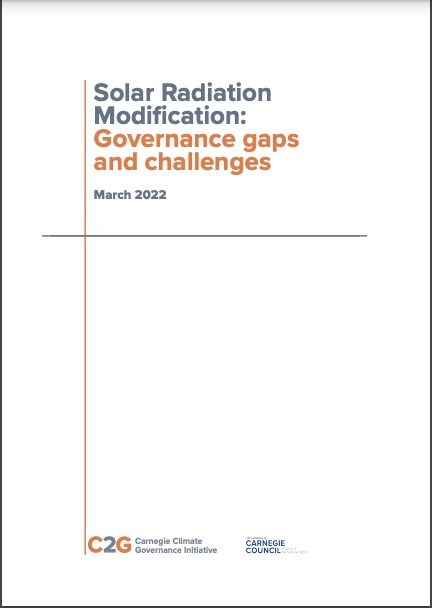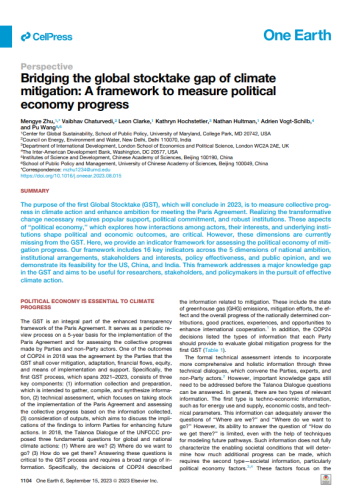Other Publications
Solar Radiation Modification: Governance Gaps and Challenges
Jesse Reynolds, Arunabha Ghosh, Nandini Harihar and Prayank Jain
April 2022 | International Cooperation, Technology Futures
Reynolds, Jesse, Arunabha Ghosh, Nandini Harihar and Prayank Jain. 2022. Solar Radiation Modification: Governance Gaps and Challenges. Carnegie Climate Governance Initiative (C2G), New York: www.c2g2.net
Overview
This paper, in collaboration with Carnegie Climate Governance Initiative (C2G), identifies the governance gaps associated with solar radiation modification (SRM). It divides SRM’s governance dimensions and challenges into those that would arise at various stages of its research, development, and possible use.
SRM is being explored as a potential approach to reduce climate change impacts in addition to emissions reduction, removal, and adaptation. Progress toward reducing greenhouse gases emissions remains insufficient, and emissions are on track to significantly overshoot the Paris Agreement’s temperature goals. SRM appears to have the potential to reduce — but not eliminate — some climate change impacts. However, it could pose other risks, which would depend on the specifics of how it is implemented. The current governance landscape for SRM is limited but not vacant.
Key Highlights
- SRM research and governance is mired with challenges. In this context, the paper analysis challenges across four areas with research, development, and possible use.
- The first set of issues are salient during SRM’s indoor research. Here, the foundational question is whether it should be researched at all.
- Other governance dimensions and challenges primarily concern outdoors SRM research. These activities are somewhat controversial, and many argue that this line of inquiry should remain indoors.
- Looking toward SRM’s potential use, the question of whether to ever use SRM, and how such a decision could be legitimately made, have received much attention. Preventing and controlling unwanted SRM deployment may be its greatest governance challenge.
- Finally, SRM’s use, if it ever happens, would engender other governance dimensions and challenges. The ongoing SRM would need to be managed, including preventing its sudden and sustained termination; claims of unfair impacts may need to be adjudicated; and governance coils could prevent the undue use of SRM for political ends.
- Existing non-state, national, and international governance instruments, institutions, and processes partially address the governance dimensions to varying degrees.
- Non-state actors provide some guidance in the form of nonbinding principles for SRM research and possible use, particularly for small-scale research and in the absence of action by countries and intergovernmental organisations.
- National governance is diverse, but generally provides basic regulation of environmental risks through impact assessment, pollution, endangered species protection and more.
- Currently, there are no international legal instruments with binding obligations specific to SRM.
- Some international governance rules, processes, and norms are directly applicable, while other multilateral environmental agreements could be adapted to govern SRM.
- Given that multilateral diplomacy takes time to develop, if governance gaps are to be addressed in time, then conversations between policymakers needs to begin now, not later.
Key Recommendations
- Facilitate responsible research through a strong international scientific assessment, international cooperation, greater involvement of States and intergovernmental bodies and coordination between funding and scientific bodies.
- Guide outdoor experiments and engage with the global public to improve inclusivity and international cooperation and establish legitimacy. This should include the voice of those that have been historically underrepresented and are especially vulnerable to the climatic impacts.
- Integrate with other climate responses. SRM seems able to reduce climate change risks, but poses other risks of its own. Hence, risk-risk trade-offs are central to SRM and its governance. Focusing on only one side of the risk ‘ledger’ will likely hinder decision-making.
- Balance commercial interests and governance concerns, both before and during any potential deployment, to strike a balance between offering incentives (such as innovative intellectual property policy) for private actors to innovate while avoiding their inappropriate influence.
- Prepare to make high-stakes decisions based on states’ perceptions of other states’ intentions to use SRM. Although the high-stakes decisions surrounding whether to implement SRM remain distant, near-term steps could be taken so that future, highly consequential decisions are more likely to be relatively legitimate, effective, and less conflictual.
- Resolve international disputes in the case that SRM is being developed and, if used, would hopefully be for beneficent purposes. In such a case, liability may be an inappropriate framework because it would disincentivise countries from undertaking beneficial activities. Instead, other means such as international funds and/or parametric insurance might be able to compensate for demonstrated harm.
Solar Radiation Modification presents a high stakes risk-risk trade-offs with significant governance gaps and uncertainties, related to deciding, managing, implementing, monitoring, and adjudicating policies and actions.




